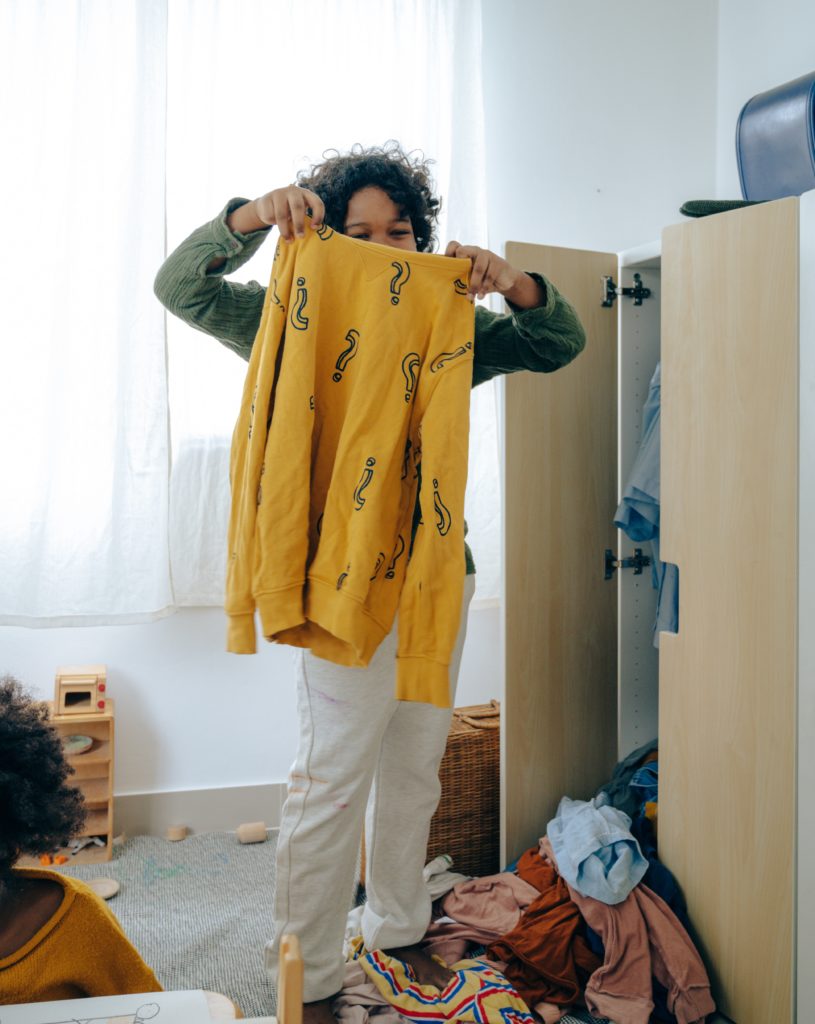3.1 Storage
The dreaded clean up after free play or small group activities can be stressful for not just the teacher but for the children as well, but is one of the important times of the day. We all know that if a room is disorganized and cluttered then it makes us and the children nervous and uptight. So it is imperative that this part of the day is not skipped. It happens multiple times during the day and and is necessary to to turn this opportunities into beneficial activities for children.
One of the secrets of a good early childhood classroom is organization. Organization of the classroom materials and the organization of effective tidy up transitions. This often requires some thinking and several trials to find the best organization methods and storage solutions but eventually you will find one that works best for your environment.
Planning for Practical Storage and Equipment

Plan for efficient and sufficient storage system. This system must be implemented with flexibility to minimize the stress inherited in tidying and cleaning up. Specific behaviors on the part of educators may impair the harmonious accomplishments of the task. Smooth transitions can be encouraged by adopting a flexible schedule that allows a few extra minutes for clean up. Introducing this task to children in a form of a game or play will make this transition easier and will teach valuable skills.
Once you have assessed your storage needs, develop an action plan to organize a safe and efficient storage space. In an in-home child care center, ingenuity is required to prevent the stored materials from invading the space where the family lives in. You might consider storage boxes behind the couch, using movable contains, and so on. In a school setting, where there may be only one room allocated for the child care program, lack of storage may be a serious problem. A storage strategy is required to simplify the many daily occurrences of tidy-up time.
A Practical Storage System
The success of cleaning activities inevitably depends on the area where these activities take place as well as the type of materials used. Obstacles that hinder cleaning activities include a small play area, difficult to reach storage for outdoor play, or hard to maintain furniture. Since the quality of the center depends to a large degree on the level of organization and storage, it is vital to identify the conditions that lead to well-organized routines.
The set up of the area must be conducive to keeping things tidy: Cubbies and hooks for children’s personal belongings; cabinets with moveable shelves; low cabinets placed against a wall or used as partitions; and storage modules on casters, which makes them easy to push from one room to another. Any mobile storage equipment with compartments and drawers is always very useful. For language activities, useful storage solutions are book display shelves at child level, transparent plastic envelopes which to insert figurines, and Velcro fasteners tacked onto the wall to hold puppets. For artwork, it is important to have a drying area , a storage place for unfinished work, and recycling bin for paper. Home based programs may care for children of various ages, there for play materials must be organized for children at various developmental stages.
The containers used for storage should be clear with open tops. Leaving bins open without lids give easy access to the materials and allow children to have access to all items. Some basic elements to consider for storage.
- Safe play material that is easy for children to manipulate.
- Materials within easy reach, without necessitating a lot of bending and stretching.
- Solid low shelving that is clearly labeled.
- Shelves and hooks at Childs eye level.
- Chairs that are easily moveable by children.
- Cabinets and drawers that are easy to open and use symbols to clearly identify their contents.
- Transparent plastic containers without holes that are easy to handle, open, and move and whose contents are easy to identify.
- Easy to clean containers, cubbies, and storage equipment.
- Storage that keeps dangerous, fragile, and expensive materials out of the reach of children unless under close adult supervision.
- Storage for computer items that keeps them safe and dust free.

Grouping similar items in the same area like blocks in the block area and books in the reading area, but there are some materials that can fit in multiple areas. It may be best to place these areas together or in the same area so that the items scan be utilized in both without having to duplicate items. Like the fine motor/ manipulatives with math materials.
The clean up routine is the perfect occasion to increase children’s level of respect for objects and equipment in their environment. Above all, avoid piling up materials on shelves and mixing objects in boxes. Work with children to put items in the correct containers and area so that they get used to putting items in the right location.
Labeling
An effective classification system is designed to allow for the visual identification for all items in containers, and all areas of the classroom. Efficient labels are attractive, explicit, secure, and durable. They can display pictures, drawings, illustrations, cutouts from the catalogs or fliers, imprints of the enclosed objects, or symbols. They make it possible for children to identify where the actual objects must be stored. It is best practice to have the word of the item plus a real picture on the container so that the children can correlate the word with the picture. This helps with letter recognition and sounds when children are starting to learn reading.
